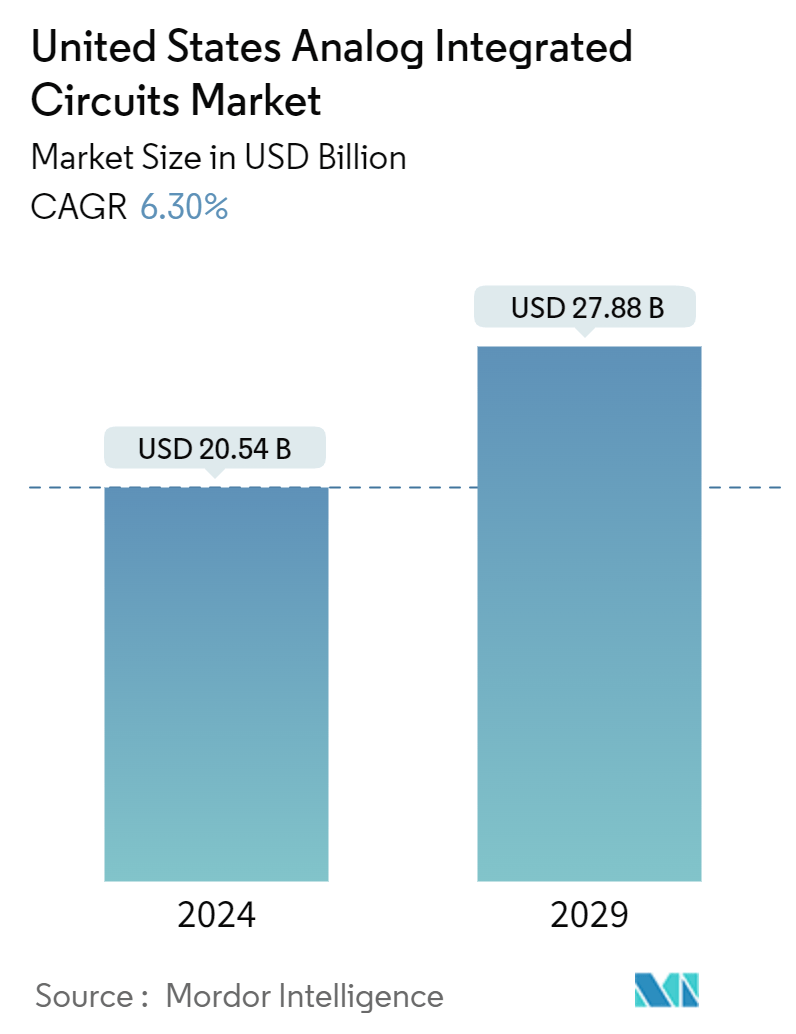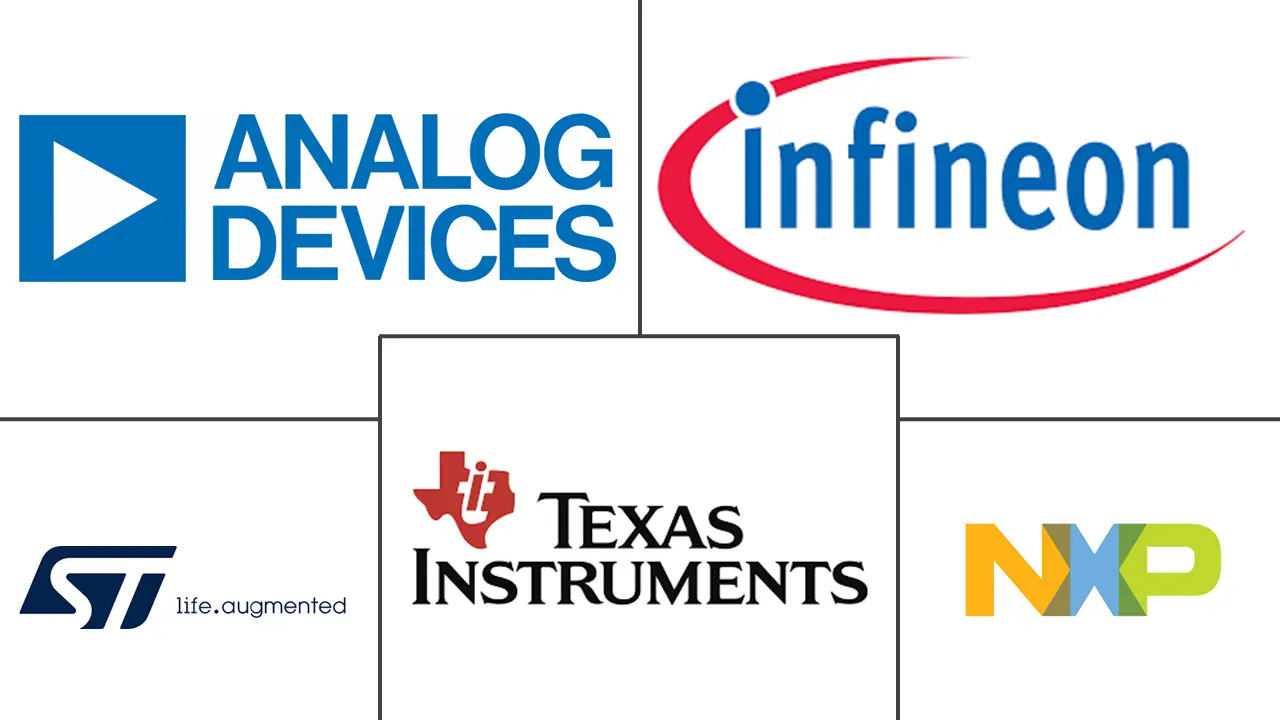Market Size of United States Analog Integrated Circuits Industry

| Study Period | 2019 - 2029 |
| Base Year For Estimation | 2023 |
| Market Size (2024) | USD 20.54 Billion |
| Market Size (2029) | USD 27.88 Billion |
| CAGR (2024 - 2029) | 6.30 % |
| Market Concentration | Low |
Major Players
*Disclaimer: Major Players sorted in no particular order |
United States Analog Integrated Circuits Market Analysis
The United States Analog Integrated Circuits Market size is estimated at USD 20.54 billion in 2024, and is expected to reach USD 27.88 billion by 2029, growing at a CAGR of 6.30% during the forecast period (2024-2029).
- Analog integrated circuits (ICs) are essential components in many electronic devices designed to process continuous signals representing real-world phenomena such as sound, light, and temperature. Unlike digital circuits, which operate using discrete binary values (0s and 1s), analog circuits handle signals that vary smoothly over time, making them crucial for applications that require precise signal representation.
- One of the primary advantages of analog ICs is their ability to process continuous signals. This capability is essential for applications like audio processing, radio frequency operations, and sensor interfacing, where the signal nature is inherently analog. For instance, in audio equipment, analog circuits can directly manipulate the sound waves, resulting in a more natural sound reproduction compared to digital methods that require conversion processes.
- In many cases, analog circuits consume less power than digital circuits. This efficiency is particularly evident in low-frequency applications where the operational requirements do not demand high-speed switching. Lower power consumption directly contributes to longer battery life for battery-powered devices, such as sensors and portable electronics, making analog circuits an attractive choice.
- As IoT devices proliferate, the demand for low-power, high-performance analog ICs is anticipated to grow in the United States. These devices require efficient power management solutions and reliable analog-to-digital converters (ADCs) to process real-world signals. Innovations in low-power design techniques, such as sub-threshold operation and advanced power-saving modes, will be critical in meeting the stringent energy efficiency requirements of IoT applications.
- The shift toward smart homes in the United States has increased the need for analog ICs in devices such as smart thermostats, security systems, and lighting controls, which require robust analog components for sensor interactions and control systems.
- Furthermore, the increasing importance of artificial intelligence (AI) and machine learning (ML) is poised to reshape the analog IC landscape in the United States. The integration of AI algorithms into analog IC designs can lead to smarter devices capable of adapting to varying conditions and optimizing performance in real-time. This trend is expected to encourage the development of analog circuits that are not only capable of processing traditional signals but are also equipped with intelligent features.
- However, the complex design process, which requires high precision and customization for specific applications, leads to increased development costs and acts as a major restraint to the growth of the market studied.
- The increased inflation and interest rates reduced consumer spending, hampered the semiconductor and electronics demand, and led to slow growth in the market. The trade war between the United States and China also disturbed the global semiconductor supply chain. Owing to strict export and import controls on semiconductor manufacturing equipment in China by the United States, the production of the consumer electronics sector is compromised.

